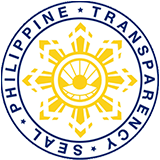
BAGUIO CITY – The public can now access information on poor households in just one click.
The Department of Social Welfare and Development (DSWD) Field Office in the Cordillera through its breakthrough program, the National Household Targeting System for Poverty Reduction (NHTS-PR) has launched the public access counter for the results of the household assessments conducted in 2009.
DSWD regional director Leonardo Reynoso said households which have queries whether they were assessed and have been made part of the database of poor households may now check the system.
Director Reynoso added household assessment results that include data on housing condition, health, education, and other information that were used as criteria for qualification in various DSWD programs can also be verified using the system.
Moreover, the National Household Targeting Unit (NHTU) Public Access also shows statistics on the profile of poor households from provincial down to barangay disaggregated data.
Individuals who are interested to access the said information can now visit the NHTU Public Access Station at the DSWD regional office in North Drive, Baguio City. Students are also encouraged to browse and use the data in their researches. DSWD staff are available to assist the public regarding their inquiries.
The NHTS-PR data serves as a basis for the Department in identifying potential beneficiaries of Pantawid Pamilya Pilipino Program, Sustainable Livelihood Program, Social Pension Program, and other services of the department that provides assistance to individuals who are in most need.
The NHTS-PR is the first national database of the Philippine Government initiated by the DSWD to ensure a complete and accurate list of poor households nationwide since its inception in 2009.
The database uses existing poverty statistics such as the Family Income and Expenditure Survey (FIES) from the National Statistics Office (NSO) and the Small Area Poverty Estimates of the National Statistical Coordination Board (NSCB) in the planning and implementation of the project.
Furthermore, the NHTS-PR uses a statistical model that involves non-income (proxy) variables in estimating the incomes of the households. The estimated incomes of the households are then compared to the poverty thresholds as determined by the NSCB.
Households with estimated income below the poverty threshold are identified as poor, while those that are above the poverty threshold are identified as non-poor. # Nerriza Faye G. Villanueva/DSWD-CAR Social Marketing Unit




